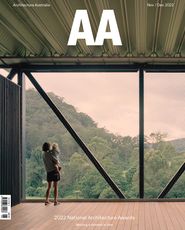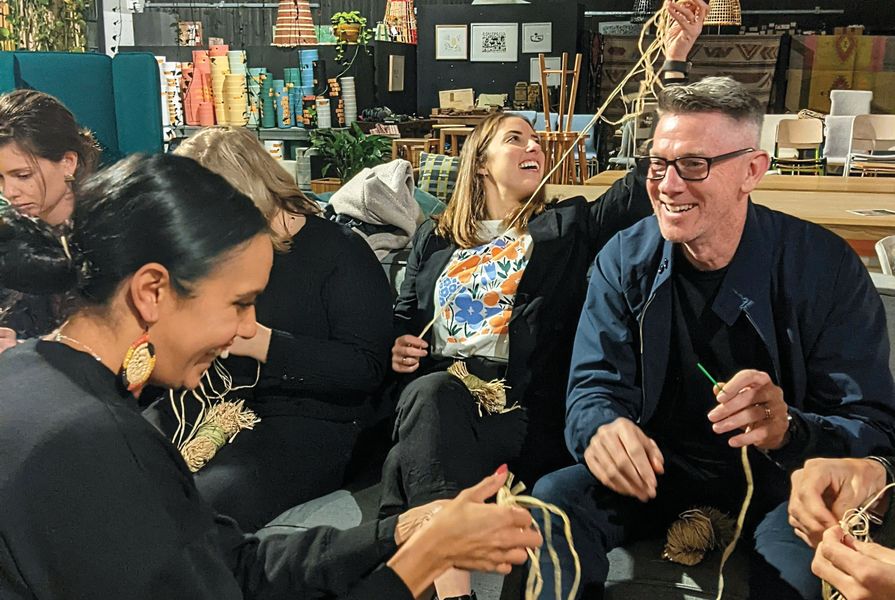What is a RAP?
A RAP is a formal agreement based on a template provided by Reconciliation Australia1 with actionable goals under the pillars of respect , relationships, opportunities and governance . By implementing a RAP, a company is committing to implement goals and actions toward reconciliation with Aboriginal and Torres Strait Islander peoples and communities. A RAP ensures that reconciliation is beyond a word; rather, it is an active undertaking to ensure the uplifting of Indigenous history, culture and peoples.
Reconciliation Australia’s vision for reconciliation is based on five interrelated dimensions: historical acceptance, race relations, equality and equity, institutional integrity and unity. These dimensions speak to creating genuine, reciprocal relationships with Aboriginal and Torres Strait Islander people, built on trust and respect. They aim to ensure that we (all Australians) recognize Aboriginal and Torres Strait Islander culture and history, and that we recognize this as part of our shared national identity. They involve providing equality in life opportunities and ensuring that the rights of Aboriginal and Torres Strait Islander people are upheld and recognized. They entail understanding and accepting all the wrongdoings of the past, including past policies and practices and their ongoing impacts on Aboriginal and Torres Strait Islander people.
Throughout the process of a RAP, a company moves through the following stages: reflect (scoping capacity for reconciliation); innovate (implementing reconciliation initiatives); stretch RAP (embedding reconciliation); and elevate RAP (leadership in reconciliation). Over time, and as the company develops stronger relationships, and its goals and actions become more advanced, it proceeds to the next stage, moving toward an increasingly reconciled practice. This is not a linear process and, depending on the company’s reconciliation journey, it may stay on one stage of a RAP for multiple years.
As a profession, architecture is behind other industries that have been incorporating goals toward reconciliation for decades and have progressed to stages within the process where this way of thinking and doing is embedded in the culture and values of the business. Companies such as Insurance Australia Group (IAG), Qantas and Lendlease are examples of how we as a profession should be considering our relationships, opportunities and the way we respect Aboriginal and Torres Strait islander culture, perspectives and history.
Despite the prescriptive nature of the RAP templates provided by Reconciliation Australia, there is plenty of room to create goals specific to our industry. How can our projects support the core pillars of opportunities, relationships and respect? How can we embed and elevate Indigenous voices and perspectives in the design of our spaces and places? As creators and shapers, we have a duty of care to prioritize reconciliation, and RAPs are one way that architectural practices can start doing this.
Why implement a RAP?
As a contractual agreement, a RAP is a tangible way to be keep your practice accountable for reconciliation. Although there aren’t any penalties if you don’t meet your targets, it will help you to incorporate easy and measurable goals into the way your practice runs.
A RAP is also a good way to show that your business is working toward making change for Aboriginal and Torres Strait Islander communities. It’s good for business because clients, government, many larger construction companies and developers are incorporating contracts that ask their sub-consultants to be engaging in measures to action their RAP goals. If you have a RAP, you are more likely to win work over other companies that aren’t engaging in this space.
If you’re looking to attract one of Australia’s few Indigenous architects or design consultants, a RAP is a big green flag. It’s not the only component we look at when we are going to work for or with a company, but it shows us that you’re working toward making change for and with us. It’s a sign that you’re a safe and culturally appropriate workplace that aligns with our core values.
What to watch out for
Beware of complacency. Many companies go through the process of creating a RAP but fail to set aside an appropriate budget and time to make sure the goals are implemented. Depending on the size of your business and the commitment you’ve signed up for – this can be a part-time to full-time job.
The RAP process requires honest reflection on where the company and staff are at, in terms of working with Indigenous communities and people. Companies often focus on going out into communities before taking an inward focus on the education of staff. Cultural competency and reflexivity training of staff can help create a company culture where staff are better equipped to create culturally safe relationships with Aboriginal and Torres Strait Islander communities and people.
Be wary of setting goals or targets that preference quantity over quality. Goals that require a percentage of First Nations employees or sub-consultants can mean a firm is focusing on getting people on board without considering whether it has created a culturally safe place for Aboriginal and Torres Strait Islander peoples to work. In this case, the staff retention rate is unlikely to be high because there will be a high cultural load. Indigenous employees and consultants are more likely to remain with companies that have taken the time to educate their staff properly and put in place processes to support their growth and safety.
When undertaking a RAP
Remember that education is an ongoing process. This is true for Indigenous people and non-Indigenous people. In both the creation and implementation stages of a RAP, the firm and its people need to be engaged in a space of active learning. Companies need to be open to hear how they can improve on their journey toward reconciliation. A firm won’t know how to do everything perfectly from the get-go and creating opportunities for staff to share honest learnings enables growth and improvement.
Indigenous voices should always guide the process. External Indigenous advisors are incredibly helpful in providing a sounding board for the goals and processes being actioned in a RAP. They can also help to connect the goals and actions to current community needs, and provide open and honest feedback, because they are only accountable to Indigenous communities.
Reassessing your company goals toward reconciliation, and aligning them with current issues and needs within Aboriginal and Torres Strait Islander communities, is vital to ensuring that the goals are meaningful, mutually beneficial and sustainable. As a firm, ask how each goal benefits the Indigenous community. If the goal aligns with both a business goal and a First Nations need, then it will contribute to a sustainable and meaningful RAP. This process must be more than just a marketing tool.
Where to begin
First, set up an information meeting with Reconciliation Australia (the team is incredibly helpful) to gain an understanding of the process and obtain a copy of the appropriate RAP template.
Second, do the research. The Reconciliation Australia website offers copies of RAPs developed by firms of many different scales and types. It’s a good idea to look at the various architectural firms (in particular, The Fulcrum Agency, Breathe, Woods Bagot and Jackson Clements Burrows Architects) and their way of approaching this process. If you want to research what an innovative RAP looks like, specify “Elevate” in the type of RAP you’re searching for.
Third, ensure you have leadership buy-in. The executive team and the practice leaders need to be onboard and fully invested in this process, otherwise real change and implementation won’t occur. When you have leaders practising the RAP values and goals, the rest of the team will be able to engage and find new and innovative ways to enact reconciliation.
Finally, begin taking simple actions toward reconciliation now – your company doesn’t need a RAP to begin making progress. Something as simple as sharing relevant presentations and books around your office can help to initiate the process.2 The sooner you begin embedding reconciliation goals and values in your core business, the easier it will be to implement a RAP.
1. Reconciliation Australia is an independent, not-for profit organization and the lead body for reconciliation in Australia. See reconciliation.org.au.
2. MPavilion’s Blakitecture forums are available on YouTube, and Parlour’s Deadly Djurumin yarns are available from the Parlour website. The Association of Consulting Architects Australia and The Fulcrum Agency co-hosted a panel discussion on RAPs, which is available on the ACA website (aca.org.au/reconciliation-action-plans). A relevant book for discussion is Design: Building on Country by Alison Page and Paul Memmott.
Source

Practice
Published online: 1 Jan 2023
Words:
Samantha Rich
Images:
Christian Sheridan
Issue
Architecture Australia, November 2022












